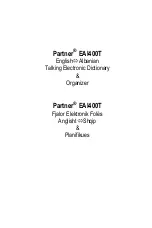
37
Specialist Vocabulary
One of the most important uses of a dictionary is to provide explanations of terms
in specialized fields which are unfamiliar to a general user. Yet in many traditional
dictionaries the definitions have been written by specialists as if for other
specialists, and as a result the definitions are often opaque and difficult for the
general user to understand.
One of the primary aims of the
Oxford Dictionary of English has been to break
down the barriers to understanding specialist vocabulary. The challenge has been,
on the one hand, to give information which is comprehensible, relevant, and
readable, suitable for the general user, while on the other hand maintaining the high
level of technical information and accuracy suitable for the more specialist user.
This has been achieved in some cases, notably entries for plants and animals and
chemical substances, by separating out technical information, eg Latin names,
chemical formulae, from the rest of the definition (shown immediately after a bullet).
For examples, see
balloonfish
and
benzopyrene
.
In other cases, it is achieved by giving additional explanatory information within the
definition itself, typically in a separate sentence. For examples, see
curling
and
cuttlebone
.
As elsewhere, the purpose is to give information which is relevant and interesting,
aiming not just to define the word but also to describe and explain its context in the
real world. Additional information of this type, where it is substantial, is given in the
form of separate note (
&
). For examples, see
earth
and
Eocene
.
An especially important feature of the
Oxford Dictionary of English is the coverage
of animals and plants. In-depth research and a thorough review have been carried
out for animals and plants throughout the world and, as a result, a large number of
entries have been included which have never before been included in general
dictionaries. The style and presentation of these entries follow the general
principles for specialist vocabulary in the
Oxford Dictionary of English: the entries
not only give the technical information, but also describe, in everyday English, the
appearance and other characteristics (of behaviour, medicinal or culinary use,
mythological significance, reason for the name, etc.) and the typical habitat and
distribution. For examples, see
mesosaur
,
kowari
and
hiba
.
Encyclopedic Material
Some British dictionaries do not include entries for the names of people and places
and other proper names. The argument for this is based on a distinction between
‘words’ and ‘facts’, by which dictionaries are about ‘words’ while encyclopedias and
other reference works are about ‘facts’. The distinction is an interesting theoretical
one but in practice there is a considerable overlap: names such as
Shakespeare
and
England are as much part of the language as words such as drama or
language, and belong in a large dictionary.
The
Oxford Dictionary of English includes all those terms forming part of the
enduring common knowledge of English speakers, regardless of whether they are
classified as ‘words’ or ‘names’. The information given is the kind of information that
people are likely to need from a dictionary, however that information may be
traditionally classified. Both the style of definitions in the
Oxford Dictionary of
English and the inclusion of additional material in separate blocks reflect this
approach.
The
Oxford Dictionary of English includes more than 4,500 place-name entries,
4,000 biographical entries, and just under 3,000 other proper names. The entries
are designed to provide not just the basic facts (such as birth and death dates, full
name, and nationality), but also a brief context giving information about, for
example, a person's life and why he or she is important.
For a few really important encyclopedic entries–for example, countries–a fuller
treatment is given and additional information is given in a separate note (
&
).
Содержание PW-E500A
Страница 18: ...this a splayed It esired English plete than yed u may wish n pages ...
Страница 23: ...22 en of the f Quotations on the first or e to be viewed by n on pages ...
Страница 28: ...specify the nd e view after t screen mes by ...
Страница 58: ...appens relates e use of s yword can enter ture a h can then ...
Страница 59: ...58 ...
Страница 60: ...RP CORPORATION PRINTED IN CHINA 05EGK TINSE0832EHZZ ...
















































